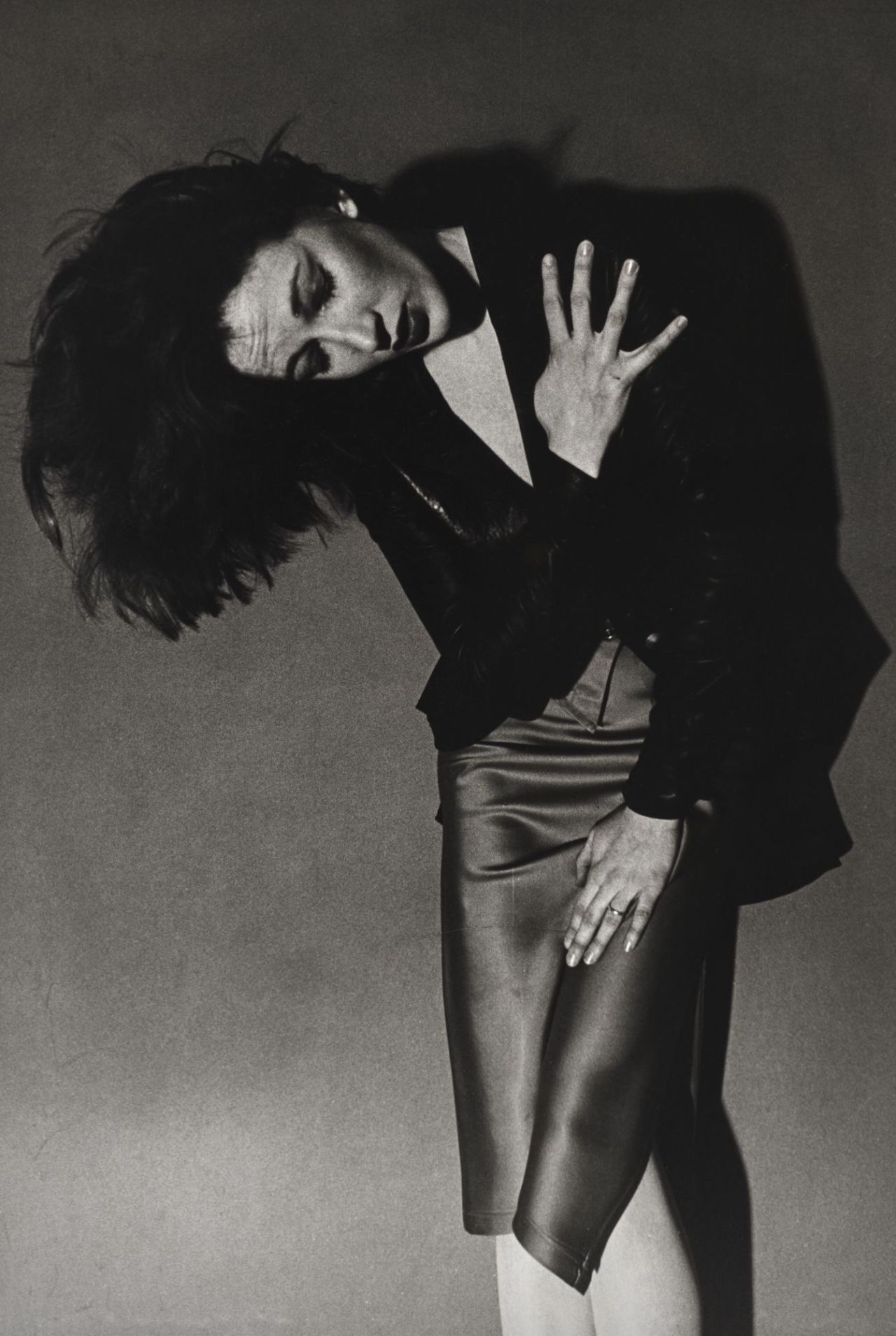
In the second half of the 1970s, Jimmy DeSana became an important portraitist of figures associated with downtown New York’s No Wave scene, such as the writer and dominatrix Terence Sellers.
DeSana often riffed on classic publicity photography from the so-called golden age of Hollywood, with dramatic poses and theatrical lighting. This celebrity-making mode dovetailed with the “ironic aesthetic strategies” of this group of artists, which the music critic Robert Christgau identified, in his 1977 article “Avant-Punk: A Cult Explodes—and a Movement Is Born,” identified as “formal rigidity, role-playing, and humor.”
The year they made this portrait, DeSana and Sellers began collaborating on a series of photographs, which documented the dominatrix with her clients and were intended to illustrate her book The Correct Sadist: The Memoirs of Angel Stern—a kind of etiquette manual for sadomasochistic practices, as told in the voice of Sellers’s alter ego.
📷 Jimmy DeSana (American, 1949–1990). Terence Sellers, 1978. Gelatin silver print, 9 5/8 × 6 ½ in. (24.4 × 16.5 cm). Courtesy of the Jimmy DeSana Trust and P·P·O·W Gallery, New York. © Estate of Jimmy DeSana. (Photo: Allen Phillips)
Notes
thatsbutterbaby liked this
theuncommonplace reblogged this from brooklynmuseum
universalcovers reblogged this from brooklynmuseum
 doeeyesux reblogged this from brooklynmuseum
doeeyesux reblogged this from brooklynmuseum  maisonlouverture liked this
maisonlouverture liked this luzdelfuegos reblogged this from brooklynmuseum
luzdelfuegos liked this
anothersilentplace liked this
 willowedwolf liked this
willowedwolf liked this xovalaxo liked this
saoiirsee liked this
randomberlinchick liked this
krlmtc liked this
guavabat liked this
 najib-tareque liked this
najib-tareque liked this capogoza liked this
jasam89 liked this
 shealwaysreads liked this
shealwaysreads liked this  cr3v reblogged this from brooklynmuseum
cr3v reblogged this from brooklynmuseum  cr3v liked this
cr3v liked this either--neither liked this
scopophilic1997 liked this
chses liked this
gnatswatting liked this
emdroid liked this
visitdunedin liked this
k-simplex liked this
cheetahpeople liked this
 middleagedandoutoftouch liked this
middleagedandoutoftouch liked this not-your-pussikat liked this
internet-sentences liked this
inariedwards liked this
 nonsenseandm3mes liked this
nonsenseandm3mes liked this rosseliz01 liked this
heyscola liked this
 opticandmasturbation reblogged this from brooklynmuseum
opticandmasturbation reblogged this from brooklynmuseum doves-fandomstuff liked this
 opticandmasturbation liked this
opticandmasturbation liked this brooklynmuseum posted this

